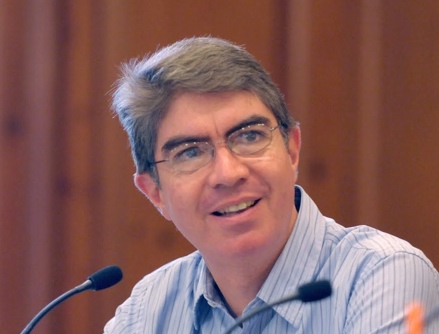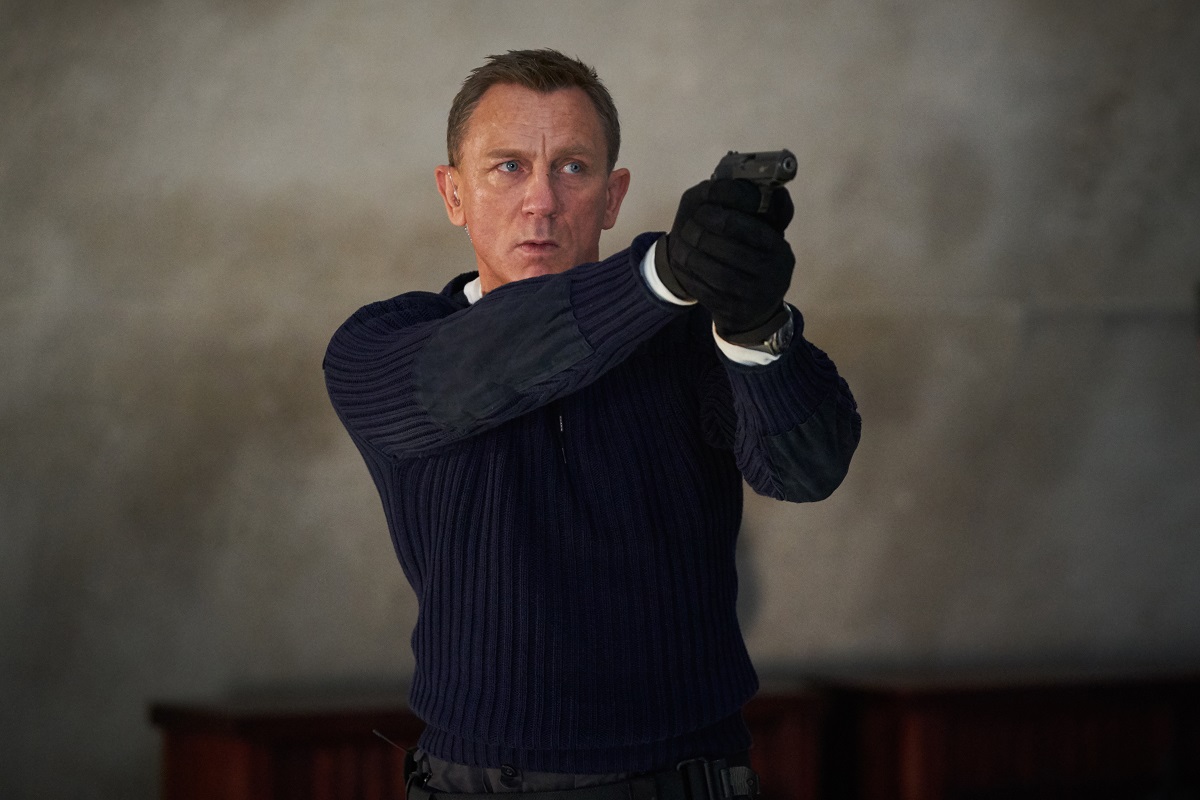“No Time to Die” features just about everything that I would have hoped for in a sequel to “Spectre,” as well as in Daniel Craig’s final James Bond film. It brings back the classic, legendary Blofeld villain (whose rights took the Bond producers decades to secure), and, for once, he sports the same face as in the prior film. It didn’t simply dismiss the pivotal Madeleine character (Léa Seydoux) like these movies have done with dozens of other Bond Girls. It brings back a full palette of colors to the screen, most of which “Spectre” inexplicably omitted. “No Time to Die” also includes other classic elements from Bond’s past that I wasn’t expecting such as a stop in Jamaica, 007’s spiritual home, and the site of a couple of his most memorable missions. It features one of the most overlooked Aston Martins from Bond’s past. It even brings back some of John Barry’s finest compositions from the early entries to the series and they are every bit as memorable as Monty Norman’s (and Barry’s own) James Bond theme. More importantly, “No Time to Die” ties up every imaginable loose end from the Craig era, a five-entry parenthesis within the 25-picture/60-year-old series.
“No Time to Die” deals with Bond coming out of retirement five years after we last saw him ride into the sunset in the DB5 with Madeleine in “Spectre.” When a dangerous weapon is stolen from the British Government by villainous Lyutsifer Safin (Rami Malek), Bond is brought back to action by his old friend Felix Leiter (Jeffrey Wright). Safin has a running feud with Bond enemy Ernst Stavro Bloferd (Christoph Waltz) while Bond develops a friendlier rivalry of his own with Nomi (Lashana Lynch), another double 00 agent assigned to the same case.
“No Time to Die” is one of the few films in the series that doesn’t start on its feet with Bond in the middle of a mission, which is one of the greatest charms of these movies. Instead, we get a flashback sto an event that’s pretty much described in its entirety in “Spectre” with a child falling through the same ice on a lake that an adult inexplicably doesn’t crack. Considering that I found myself meandering during what’s usually the most exciting part of these movies, and that the sequence could have easily fit anywhere else in the picture, I think the decision to place the scene here was a mistake.

We then get to the real meat of the pre-title sequence, a chase sequence that reprises the sight of Bond in front of the grave of a loved one from “For Your Eyes Only.” These events turned out to be orchestrated though, I have a hard time understanding why Blofeld would feel the need to frame a character in the eyes of Bond if he’s making such an effort to kill him anyway. Even though the action comes in the wake of several fantastic eccentricities from Bond’s pre-title past, such as 007 parachuting from a mountain in skis, clinging from out-of-control helicopters while hovering over skeletons, or jumping out of an airplane without a parachute, this seemingly standard opening chase sequence is still outstanding and as it often happens with the Bonds, a highlight of the film. After all these years, we finally get to see the beloved Aston Martin DB5 at its full capabilities (for once without background photography or film acceleration techniques) in one of the greatest locations in memory. Bond is chased by a mean group of Spectre agents in what is the best such sequence since the days of “On Her Majesty’s Secret Service.”
“No Time to Die” is entertaining throughout its record runtime. It’s also a Bond film unlike any other. Just like the mostly quiet Michael Corleone suddenly became rather over-talkative in “The Godfather, Part III,” the same happens here with Daniel Craig’s 007. He even utters the kind of lines that Bond has never really dealt much in the past, such as “I miss you” and a long heartfelt speech to Madeleine that concludes with “I love you.” Additionally, we get a very comedic byplay between Q and Bond, and there are elements in the Quartermaster’s life such as the hysterical music playing in his apartment, or his bald cats that feel like something from the Roger Moore days.

Even though the villain’s plan in “No Time to Die” is fairly hideous, the tone of this film is much more playful than in any of the other Craig Bond films. This has been a key issue during the franchise’s history. There have even been entries with practically identical plots such as “The Man with the Golden Gun” and “Skyfall” but their moods and tones have yielded wildly different results. Just compare the Spectre meetings from the prior film and that from “No Time to Die.” The first one is deadly serious to the point where you literally can hear a pin drop; the second at times feels like a bar fight in your typical Western. One of the unexpected effects from the constant change of directors in the Daniel Craig era has been some wildly different results in key areas of their production. “Spectre” looks as if cinematographer Hoyte van Hoytema used a film stock that expired long ago while most every shot in “No Time to Die” by Linus Sandgren seems like the antithesis of the former, as if taken during a perfect sunset. And while director Cary Joji Fukunaga tends to keep a light touch, he makes sure to play to Craig’s strengths, giving him several ruthless moments such as when he avenges a friend in another scene inspired by “For Your Eyes Only” (“he had no head for heights”). But, his film is overall not quite as gritty as the other Craig Bond entries.
The Bond movies have also tried to become more ambitious with every entry. Ever since the reveals of M and Moneypenny in “Skyfall” turned out to be so effective, the producers seem to feel including a big revelation is necessary in every picture. In the case of “Spectre,” the disclosure of the Christoph Waltz as Blofeld was mostly a non-event. In “No Time to Die” we get an overly sentimental sequence that reminds me of Bruce Willis and Liv Tyler at the end of “Armageddon” and the typical presence of a child conceived the night before a couple is split by destiny, and which the father doesn’t immediately realize is his when they inevitably meet. This is clearly the weakest part of the movie, which is a shame considering that each and every Daniel Craig entry had a much simpler but brilliant conclusion. Additionally, the producers seem to have realized that the best and more transcendent Bond films have been the ones where an important character dies at the end. In the (not very accurately) titled “No Time to Die,” the series loses three characters that have been a part of the backbone of the series, but none of their deaths were quite as affecting as those of Vesper or Judi Dench’s M in prior films. All of this material is primarily what gives the movie its record time and I found it mostly unnecessary.

Still, the rest of “No Time to Die” is as entertaining as any Bond in memory. The reassignment of the 007 number was a rumor so brilliant, it just had to be true. The Macguffin menace here was much more intriguing than the risks of unwanted surveillance in “Spectre” (considering the state of our world, I even found it a little too effective). The feud between both villains brings some very believable twists and turns. Not only is the Ken Adam-inspired impregnable fortress striking but it is also given excellent use in the ending action scenes, and the only fault with the Cuba sequence is how quickly the movie gets rid of the wonderful Ana de Armas character.
After reaching an unprecedented level of closure with the Daniel Craig era, it’s hard to envision what the future holds for Bond. Having gone this far, it is also hard to imagine the filmmakers going back to the simpler films of the past. When it comes to Bond 26, I would be happy for the series to go back to the model of early films of the Craig period without the many distractions of the later ones. “No Time to Die” avoids the usual jinx of the Bond actor leaving the series on his lowest note as it happened previously with “Diamonds are Forever,” “A View to a Kill,” and “Die Another Day.” But I will always prefer the grittier tone that clearly put Craig’s “Casino Royale” and “Skyfall” among the top five best Bonds of all time, and made his interpretation of the character only second to the late Sean Connery’s.












